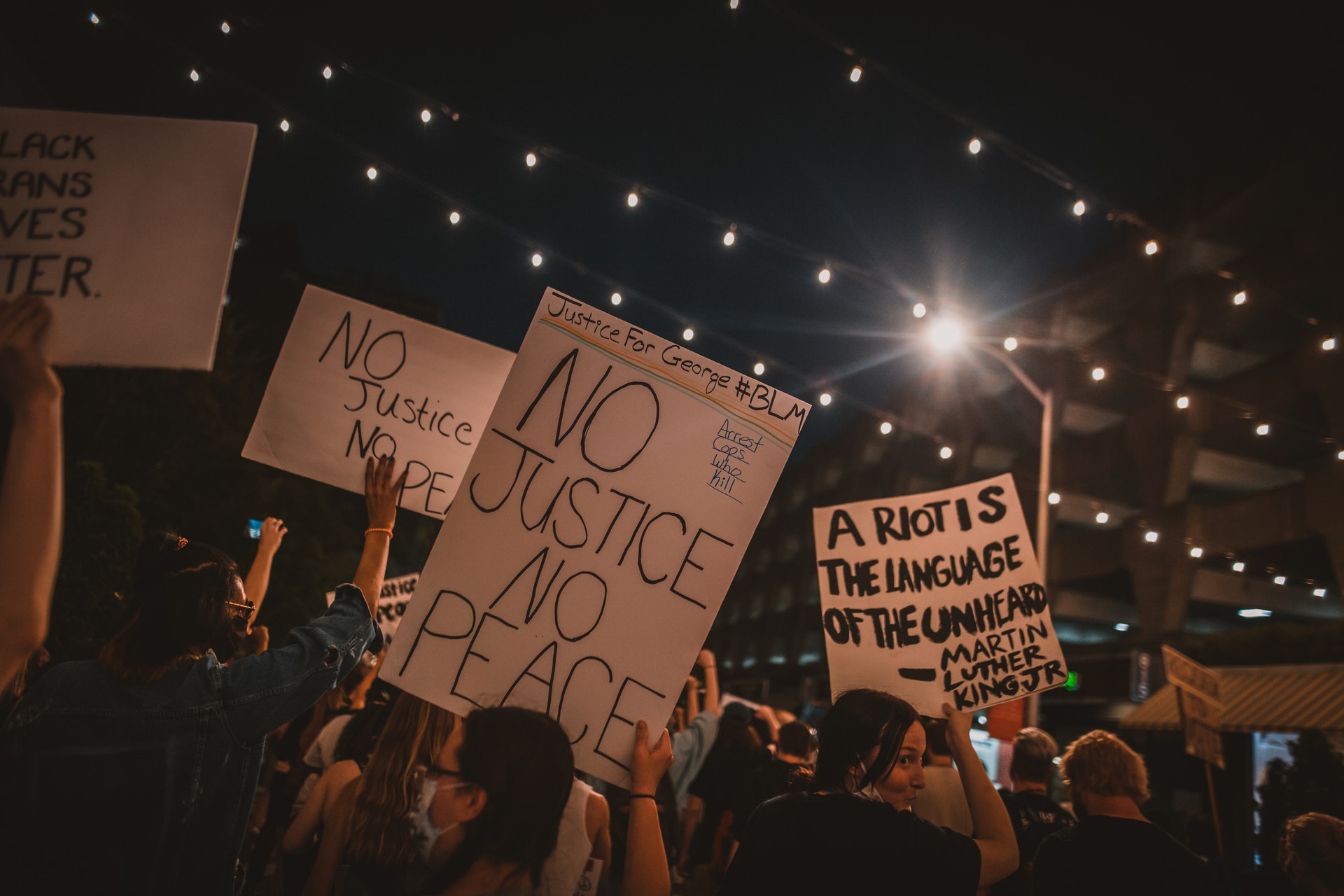Most individuals and groups who appear stuck in long-standing conflicts define themselves, at least in part, as “the ones who must fight.” Whether they see themselves as victims, dominants, or simply as having to struggle to survive or thrive; whether this struggle is with another party or simply within themselves (the individual’s life or among group members); this attachment to an identity of struggle is their “conflict identity.” A party’s conflict identity is a powerful roadblock to peace and conflict resolution proceedings.
Individuals weave conflict identities into their very self-concept. Groups weave conflict into their cultural identities. When this occurs—when the conflict identity is set—coming out of the conflict becomes extremely difficult, as it requires a conceptual breakdown and reformation of one’s very identity. Change in general is scary to most people; the unknown or mysterious often prompts the idea of a threat and inspires fear and anger at the mention of such a prospect. Hence, identity reformation is extremely difficult, which is why intractable or long-standing conflicts are so difficult to change. But…not impossible.
Narrative Dissonance
If you were to take the conflict away from those who are steeped in long-standing conflicts, it would be a sudden and frightening feeling for them. Who are they without the conflict? What self-concept or cultural identity could they anchor into if a central part of their narrative were suddenly lost? This sudden gap—a dissonance in the narrative that comprises one’s self-concept or a group’s identity—illuminates the very reason so many are unwilling to give up the conflict, the reason they will in fact fight to preserve the conflict.
Take the Israeli-Palestinian conflict as an example. Both sides continue to desperately fight for territory and recognition, which each purports as central to their own identities. Their desires seem to be quite clear, and unfortunately quite contradicting to one another, thus creating the intractable impasse. However, I wonder if a viable solution were in fact presented—if both parties actually somehow got what they wanted—would the fighting stop? Would the conflict end? Would the struggle dissipate? I propose that while consciously both parties aim to satisfy their stated demands, unconsciously neither wants the conflict to end. If the conflict were no more, who would they be? What would now constitute their central cultural mission or purpose?
Both parties are fighting, hating, raging against one another for a cause. But is that cause indeed to achieve their stated goals? Or is that cause the cause itself? In other words, are they, in some part, simply fighting to keep the fighting going, in order to hold onto their conflict identities? And if they actually got what they demanded (in some ideal world), would they be willing to let go of the conflict? I believe they would have trouble doing that; and so, they continue to have a major challenge even approaching viable solutions to the ordeal.
Similarly, an individual who has “always struggled” in life or who constantly sees himself as the victim to circumstances or people, will have a very difficult time coming out of that identity. Even if he were to be given all new circumstances, all the things he says he wants, it would be very difficult for him to ever stop thinking of himself as a victim. He would find new reasons to struggle and new parties against which to fight. That is, until the struggler becomes willing to form a new identity.
Reforming Identity for Purposes of Peace and Conflict Resolution
The socio-psychological gap left by long-standing conflict dissolution presents the need for a replacement variable—a new conceptual anchor, around which the parties can build a different narrative. If the self-concept or cultural identity is anchored by a conflict identity, and the conflict dissipates, the individual or group must quickly look to fill that gap with something new. It will either find something productive or something else destructive; either way, the gap cannot and will not be left open for very long. So, with what can they fill the gap in order to form a new identity?
The replacement variable for purposes of peace and conflict resolution must have a few key elements:
1) it must be perceived as having some significance, likely on the level of a symbolic contribution or place in society;
2) it must present at least some challenge, so the individual or group can productively struggle toward a goal and feel accomplished along the route to its achievement; and
3) it must serve one or more of our basic human needs.
I have a feeling that because Israel has such a robust economy and a variety of emerging international interests, they might find it easier to let go of the conflict. They have a budding technology industry, and have become known worldwide for their innovation. Therefore their capacity to replace the conflict identity with an identity of something more productive is likely greater than their counterpart in the conflict. Palestinians, unfortunately, will have more difficulty. This is not their wholly fault; rather, because of the oppressive sociopolitical and economic circumstances imposed upon Palestinians, they likely have a much more unstable foundation on which to build a new identity. Hence, part of the solution to this conflict will be for the international mediators involved in the peace process to help Palestine, in whatever way possible, build greater infrastructure, increase employment, and conceive an innovative future around which Palestinians can anchor and create a new, satisfying narrative. Otherwise, they will be left with a cultural and self-conceptual gap, which will not last and will once again be filled by some challenge. We must help assure that such a challenge is a productive pursuit, and not a new or old destructive one.
The development of this reformed identity will have to take place during the peace process, simultaneous with proposed resolutions, as opposed to post resolution (in a “gap-filling” capacity); this is because without a new identity at least in early stages of formation, parties who have a strong conflict identity will likely protect against the dissolution of the conflict, even if unconsciously, because it is essentially the same as defending against the dissolution of one’s total identity.
As for the individual who is a lifelong struggling victim, he would also have to form a new identity—one of inner peace and conflict resolution, of productive and purposeful pursuits. This will be difficult. The individual will therefore likely require psychotherapeutic intervention during the transition. Like conflicts between groups, conflicts within or between individuals will also typically demand the guidance of knowledgeable, expert mediators.
The Need to Struggle Toward Something
We all need struggle in life. We all require challenge. Without it, there is no sense of progress or accomplishment, which is a fundamental human need for psychological well-being. The sense that one is learning and growing, achieving goals and meeting challenges, is absolutely essential for healthy mental functioning. Unfortunately, without the presence of productive and constructive challenges, people will often settle into a destructive struggle—one in which the struggling parties and usually multiple other parties are affected detrimentally.
Because the need for progress and achievement is so core to our basic psychological needs, and because individuals will latch onto any struggle they can find to consciously “satisfy” this need, changing the satisfier will be difficult. Individuals and groups must be convinced that a new identity is possible; that there are different, important, and more productive missions upon which they can embark toward the fulfillment of a sense of progress and a transformed self-concept or cultural identity.
As a specialist in the field, I know that conflicts can dissolve, that conflict identities can change. However, this change takes belief and hope in a new version of the self, a deep and significant desire for ultimate peace and conflict resolution, and the willingness to face the frightening process of deep internal change.
Written by Dr. Jeremy Pollack, chairman of PLI and specialist in peace and conflict resolution psychology.



